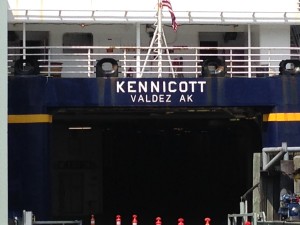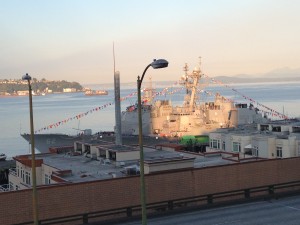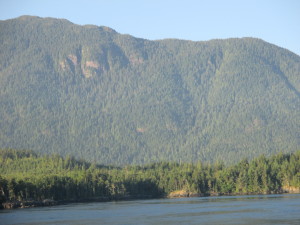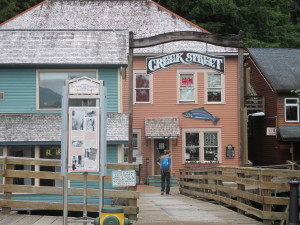Traveling through the Strait of Georgia, northbound to Alaska is truly a scenic experience. The M/V Kennicott, one of the state’s eleven ships, provides a marine highway system for area residents and their vehicles as well as for tourists. The system has been continuously operating since 1963 and serves 33 communities from Bellingham to Dutch Harbor.

A flight from Des Moines to Seattle via Denver is the first leg in getting there. Seattle International Airport provides a reasonably priced light rail train ($2.75 a ticket) that takes you and your trip luggage to West Park Station, a few blocks walk to downtown lodging.
Seattle’s Seafair was in full swing when we arrived, complete with Air National Guard acrobatic shows over Elliott bay and tours of a docked military ship at the waterfront park.

Another highlight: Aithna McAleese, owner of Kell’s Irish Pub/Restaurant welcomed us for a traditional Irish meal, complete with Irish soda bread. Day one ended with a walk through the Pike Market shops and a black cherry ice cream cone from the Rocky Mountain Ice Cream Company on First Avenue.
Day 2 began with a Belair Airporter bus depositing us in Bellingham where we picked up our ferry tickets at the Alaska Ferry Terminal. Soon we were aboard the M/V Kennicott and heading north through the Georgia Strait, Vancouver Island on our port side and Richmond, B.C., starboard. Scenery abounds along the strait–tall firs and cedars, volcanic shore lines, coastal mountains, and pods of Orca whales. As the strait narrowed, we saw light houses, bald eagles, and a First Nation village along the coast. The ferry captain regularly announced interesting sights so we could view them from the ferry’s bow.

Our first stop on the ferry, was Ketchikan, a small city nestled on the southwestern side of the densely forested Revillagigedo Island. Stacks of steep-roofed houses layer the slopes and the businesses spread out into the Tongass Narrows.

Locals refer to Ketchikan as the salmon capital of the world; others recognize its tourism and logging. Early inhabitants were Tongass and Cape Flx Tlingit Native Americans who were lured there by its maritime climate and natural resources–timber and fish.

Early regional history shows a surge of fishermen, miners, and loggers in the early 1900s. We visited Creek Street, a section of old Ketchikan that’s built on pilings over water; its entrance is a wooden walkway. We toured Dolly’s House, an early town brothel turned museum and the Southeast Alaska Discovery Center which reminded of Alaska’s rich wildlife, resources, and culture.

